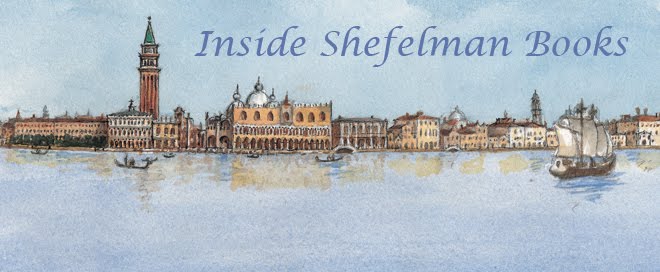Sophie's Cabin
JANICE: Do you make pictures in your mind when you read a good novel? So much so that you forget you are reading? That means the author made pictures in her mind when she wrote it. Visualization is the most potent technique I have ever discovered. It not only transports the reader, it transports the writer of fiction to some other place and time.
Here is a scene from my historical novel, Sophie's War. Sophie is the daughter of a German family living in Comfort, Texas, during the Civil War. Her father, like many German immigrants, is a Unionist living in a state that has left the Union. Since he makes his views widely known by drawing editorial cartoons for a San Antonio newspaper, he has received threats from Confederate ruffians. Sophie tries to persuade him to keep silent, but he refuses.
"After school I went straight upstairs. Papa sat at his drawing board with his back to me. When he is at work he neither sees nor hears anything else. I looked over his shoulder, and my heart sank. He was drawing a cartoon for the Zeitung about the death of General Johnston.
I stood behind him, scarcely breathing. This one was going to get him in trouble. I had to do something, and begging did not seem to work.
Suddenly, I knew I had to destroy the cartoon. The very thought made my heart pound.
Papa must have heard it, for he turned to look at me. I reached for the cartoon, snatched it from the drawing board, and stepped back. I tore it in half as he stared at me in disbelief."
To write this scene I visualized climbing the stairs to the half-story and standing behind Papa. Long before, I had found and photographed the log cabin where she would live. And I had drawn a plan of both floors, including placement of furniture. These were pinned up on the wall of my studio next to my writing desk. I also had pictures of characters gleaned from books, magazines, and photograph albums. And Tom had drawn a cartoon in the style of Thomas Nast, a Civil War cartoonist. When Sophie looks over Papa's shoulder, as I have looked over Tom's, I knew exactly what she was seeing. My heart leaped too.
It took time and much writing before I became conscious of visualizing, even though I was doing it. Now that I am aware of the technique, I use it constantly. If I get stuck, it is because I am not visualizing. I refuse to use the w.b. words because they sound like a terminal disease. Being stuck is not terminal. It is temporary, caused by a lack of information that enables me to visualize. Thus it is time to do more research.
There are many ways to collect images. The library with its carefully chosen books and helpful librarians is a first choice for me. Although I also research on the internet, mostly for images, my real love is the library where professionals, both editors and librarians, have screened the contents for reliability.
But libraries are not enough. Give yourself experiences related to your book. These are but a few of the experiences that helped me write and Tom illustrate my stories: Crossing the Pacific Ocean by freighter, visiting the small village in Germany where my ancestors lived, watching a house being moved, playing soccer with the boys in the square where Vivaldi's childhood home still stands, walking the beach at Indianola on a cold December day, observing Arabian horses at a stable, following the Comanche trail across Texas that led to the Battle of Plum Creek. Do whatever it takes to give you images and sounds and smells of the places in your story.
For Sophie's War I lived in Comfort for two weeks and returned at the various seasons to experience the change. There I found Sophie's cabin, roamed the land where it stood, watched sheep grazing in the meadow, the sun rise over Cypress Creek, listened to the wind sough in the liveoak branches, and felt myself becoming Sophie.







No comments:
Post a Comment